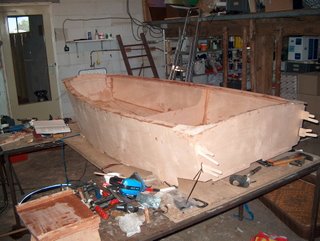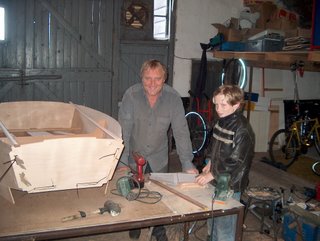
The name on the boat. It means little boat in Chinese. Xiau Chuan. It looks very nice on the boat. I am going to put a black stripe on it and another layer of lacquer. Its almost ready!
All the daily events at the gallery in Dieverbrug, the search for the meaning of life in the small and beautifull things that surround us here.








